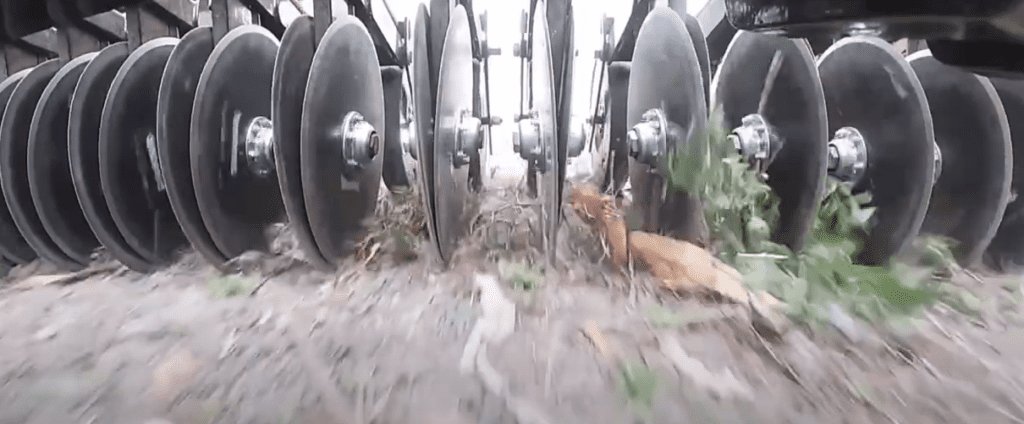Land management practice trends are changing in Australian agriculture. Sustainable land management practices are increasingly on the rise, as their benefits to productivity and soil health take a front seat. Many of these changes to on-farm practices are being closely monitored by the Department of Agriculture using data from the Australian Bureau of Statistics (ABS). In the 2017 report, 16 million hectares received no cultivation, apart from sowing or planting, a 16% increase on the 2015-16 data. In addition, ABS reports the most common crop stubble and trash management practices were retained on the ground, undertaken on 5.8 million hectares of crops; retained standing, undertaken on 5.3 million hectares; and grazed off, undertaken on 3 million hectares.
Direct Drilling is a sustainable method of planting crops directly into the land with minimal to no-tillage or disruption to the soil. Direct seed drills are specialised farm machinery, which is towed behind a tractor to sow seeds into the soil with uniform depth and row spacings. A direct drill seeder aims to place the seed directly in the residues of the previous crop with minimal soil disturbance, which can have several advantages depending on the conditions. Switching to seeding with a direct drill can offer numerous advantages depending on the program and conditions. So why make the switch to direct drilling?
- Soil health – One of the biggest advantages of direct drilling is that it helps to improve soil health. By leaving the soil undisturbed, the natural structure and fertility of the soil are preserved, leading to increased microbial activity and organic matter content. Direct drilling helps to maintain the natural structure of the soil, promoting healthier root growth and increasing the soil’s ability to absorb and retain nutrients. This, in turn, can help to improve crop yields and reduce erosion.
- Prevent Soil erosion – In addition to conserving moisture, direct drilling also helps to prevent soil erosion. When the soil is plowed or tilled, it may become more susceptible to erosion from water and wind. By planting crops directly into the soil, farmers can reduce the risk of erosion and protect the long-term health of their land
- Improved moisture conservation – Direct drilling can conserve soil moisture. By leaving the soil undisturbed and allowing the top layer of soil to be covered by trash residues, it can protect against the evaporation or erosion of moisture. This is particularly beneficial in dry and arid regions and can help reduce the need for irrigation.
- Reduced Input Costs– Switching to direct drilling could help reduce the use of fuel consumption, chemicals, and fertilizers. By minimizing soil disturbance, direct drilling creates a more stable and balanced ecosystem, reducing the need for synthetic inputs. This can lead to cost savings for farmers and also benefit the environment by reducing chemical runoff into waterways.
- Sustainability – Direct drilling can help to decrease the carbon footprint of agricultural practices offering numerous environmental benefits. Traditional farming methods release carbon dioxide into the atmosphere. Direct drilling can help to sequester carbon in the soil, reducing emissions and promoting sustainability.
Considering making the switch to direct drilling and a direct seeding no-till drill? Value add to your program and potential yields with a no-till drill! From conserving soil moisture and preventing erosion to improving soil structure and reducing chemical inputs and costs, direct drilling offers a range of benefits for farmers and the environment alike. By embracing direct seed drills, Australian farmers can work towards a more sustainable and productive agricultural future.
References:
- Land Management and Farming in Australia, 2016-17 | Australian Bureau of Statistics. (2018, June 26). Www.abs.gov.au. https://www.abs.gov.au/statistics/industry/agriculture/land-management-and-farming-australia/latest-release#crop-and-pasture-management
- 8 Benefits of Using Direct Drills for Seed Cultivation. (n.d.). Amtec-Group.com. https://amtec-group.com/blog/8-benefits-of-using-a-direct-drill-for-seed-cultivation
- Land management practice trends in Australia Building on success New tools and information for the Landcare community. (n.d.). Retrieved September 24, 2023, from https://www.agriculture.gov.au/sites/default/files/documents/ABARES_2014_LandManagementPracticeTrendsAustra.pdf
- Montgomery, D. R. (n.d.). A Case for No-Till Farming. Scientific American. Retrieved August 21, 2021, from https://www.scientificamerican.com/article/a-case-for-no-till-farmin/
- https://grdc.com.au/resources-and-publications/grdc-update-papers/2014/02/direct-drilling-a-no-till-success-story
*Disclaimer: The articles presented are generated using a combination of AI technology and human contributions. We encourage readers to use their critical thinking and discretion when consuming the content and consider cross-referencing information from credible sources. Whilst our team reviews and edits the AI-generated articles, the algorithms may produce errors or omissions that are missed. We are not liable for any damages or losses that may arise from the information provided on this website.

